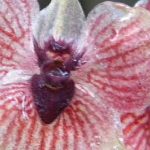Learning to better understand the language of algae
Communication is everything -- and that applies for algae, too. However, their chemical language and its significance in aquatic ecosystems remain largely unknown. New...
Deforestation in the tropics linked to a reduction in rainfall
Deforestation is resulting in reduced rainfall across large parts of the tropics, according to new research. People living in tropical forest communities have often...
Where will the world’s next Zika, West Nile or Dengue virus come from?
Scientists have identified wildlife species that are the most likely to host flaviviruses such as Zika, West Nile, dengue and yellow fever. They created...
Extraordinary treefrog discovered in the Andes of Ecuador
A dazzling new species of treefrog was discovered at a remote tabletop mountain in the Ecuadorian Andes. The new species has an extraordinary characteristic,...
The naming of the shrew
Researchers have discovered a new species of shrew, which they have named the hairy-tailed shrew, or Crocidura caudipilosa.
Scientists reveal the true identity of a Chinese octopus
A team of researchers came across a new-to-science species of octopus from Dongshan island in China's Fujian Province. At less than 40 g in...
Pythons are true choke artists
Biologists have found that it's not just the size of its head and body that puts almost everything on a Burmese python's menu. They...
Invasive flies prefer untouched territory when laying eggs
A recent study finds that the invasive spotted wing drosophila (Drosophila suzukii) prefers to lay its eggs in places that no other spotted wing...
New study examines leeches for role in major disease of sea turtles in Florida
Researchers are homing in on the cause of a major disease of sea turtles, with some of their latest findings implicating saltwater leeches as...
Crystal clear: Lepidopterans have many ways of being transparent
Breakthrough article reveals multiple mechanisms for wing transparency in butterflies and moths; shows that wing transparency has evolved multiple times in lepidopterans.























